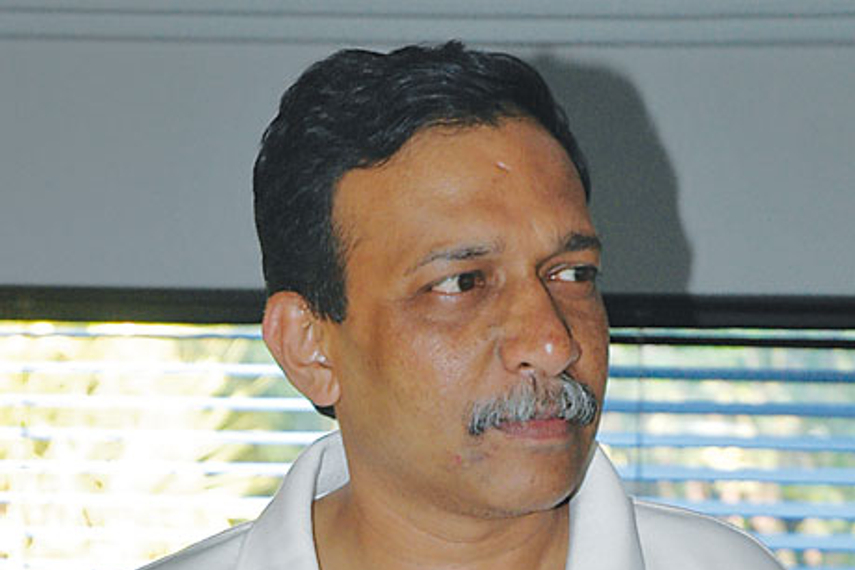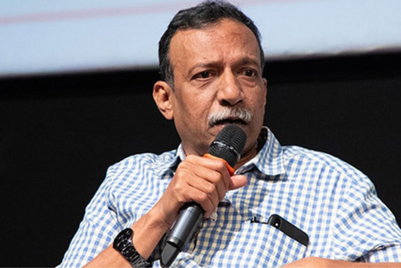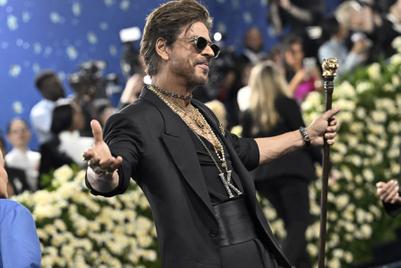
The last week witnessed, a) the culmination of a Mumbai-specific campaign for Hindustan Times called ‘No TV Day’ and, b) the launch of a national campaign for DNA called ‘Be positive’.
I followed both with interest, as I do all campaigns of media products.
To refresh your memory (or to share them with you in case you haven’t seen them) here are the campaigns:
No TV Day
Be Positive
HT’s No TV Day has been very high decibel, extravagrantly using their own paper, extensively using outdoor, etc.
DNA’s, up to now (and that is important because it just launched) is relatively lower key.
Before I go into the two campaigns, here’s a peek at what I wrote when another media product, The Times of India, launched another campaign, Aman Ki Asha:
When I first saw the Aman ki Asha campaign, I liked what I saw. A campaign promoting hope for peace between India and Pakistan, supported by the largest newspapers of both countries (in India’s case, the largest English newspaper).
And as the campaign rolled out, I grew less and less enthusiastic and tried to understand why there was no buzz.
Simply put, the campaign sets a goal for itself that is out of the realm of the possible and the probable.
In the case of Lead India, the premise was that India needed leaders with intelligence, integrity, capability, drive, commitment and so on.Consumers agreed with the premise.
The Times of India made available various platforms of their parent company, Bennett, Coleman and Company Limited, to promote the cause and involve readers and viewers in the identification of the leaders of tomorrow.
Consumers got involved, leaders were identified. The campaign, from the point of view of The Times of India, worked brilliantly.
It’s another issue that I have no clue what the ultimate winners are doing. Are they working for a better India or have they gone back to their humdrum lives? In the case of Teach India, the premise was that India needed teachers outside of the framework of formal education; ordinary citizens who would sacrifice personal time and effort to help other ordinary citizens improve their lot by helping them improve basic skills.
Consumers agreed with the premise and The Times of India and various platforms of BCCL pumped up the volume. Consumers got involved, ‘teachers’ signed up in thousands. This campaign, too, from the point of view of The Times of India, worked brilliantly.
This, too, is another issue where I have no clue what the ‘teachers’ who were discovered are doing. Are they changing the world or have they gone back to their humdrum lives?
In the case of Aman ki Asha, the premise is that peace is required between Pakistan and India and that more people-to-people interaction would help achieve that elusive, much wanted peace.
In this case, I do not believe that consumers agree with the premise.The premise that people – individual citizens or groups of citizens – could help bring about peace between the two nations is optimistic at best and fanciful at worst.
The ‘boycott’ of Pakistani players by IPL teams demonstrates the major issue at hand: politics.
Lalit Modi, the BCCL, various chief ministers and home ministers at various states, the Prime Minister, the home minister, – all of them, together, cannot guarantee that teams with Pakistani players will not be targeted by trouble-makers for meeting political ends.
Cricket fans in India certainly like to watch Pakistani players; any number of Pakistani players are popular in India. We’ve had Imran Khan modeling for Cinthol, we have a number being appointed as commentators on various sports channels whose primary audience is in India.
‘People’ in India would have no objection to Pakistani players being a part of the IPL. Politics is another issue, however. That’s why Aman ki Asha fails.It’s bitten off more than it can chew. It’s taken up a cause, however dear to Indian readers, which Indian readers do not believe can be solved by Indian citizens.
Perhaps The Times of India should have taken note of a global trend. Give me more local news, talk to me about local issues, educate me on local personalities, involve me in problems that impact my life on a day-to-day basis.For the rest, we have Ban Ki Moon and Barack Obama.
To me, The Hindustan Times campaign resonates, because it is so easy to identify with it. On a personal front, I have no DVD player at home; often, I disconnect my TATA Sky connection for a month or two. I find that, as I live alone, it is easy to fall into the trap of watching too much TV or watching too much on DVD, both of which prevent me from other, more useful pursuits – reading, writing, listening to music, catching up with friends, etc.
In this day and age, parents of young children are worried that they watch too much TV – when they could be doing something which would help more in overall development, such as reading, playing outdoor, etc.
To help you stay away from TV, HT negotiated with a number of restaurants and entertainment outlets for discounts that readers could receive on the day.
On No TV Day, I watched TV. I watched the FA Cup on Sony Pix, I followed developments in Egypt on BBC and CNN. I know a lot of people who were aware of the No TV Day campaign – and yet watched a lot of TV.
And yet, I’ll say the No TV Day campaign was an unqualified success. While many of those who were aware of the campaign would have, like I did, watched TV, they would be as aware of the dangers that watching too much TV present. Which is important.
Many on twitter ridiculed the campaign, first asking what the campaign would achieve and then going on to answer the question – saying nothing would be achieved.
It was not a campaign that would change the world as we know it. It would not bring peace to the Middle East, not even to Kashmir, not even to a Naxal affected village in interior Maharashtra.
But it would remind those who saw the campaign that watching too much TV was, simply, not a good idea.
Now we come to DNA’s India Positive campaign.
The announcement was through a full page false cover in DNA. Long copy ad, and I’m a sucker for long copy. Fundamentally, it tells us of all the achievements by Indians and India that we should feel positive about.
The trouble is, many of the achievements that the campaign highlights are older than the hills – such as being responsible for ‘originating’ calculus, trigonometry and algebra.
Some are tenuous – ‘Indian scientists have created a solar-powered touch screen computer cheaper than an iPad’. We have? What’s it called? Have you seen it? Do you know anyone who uses one?
The one that gets my goat is a statement saying ‘9 Nobel Prize winners have been Indians’. Nine? Who the hell were they? So I go to wikipedia and check it out. It says “Nine Indian citizens or people of Indian origin have been honoured to date, but only three of these are or were Indian citizens, and seven of Indian origin.”
Nitpicking aside (actually these are more than nits), the campaign does not even achieve ‘feel-good’. Most of the achievements of the country described in the campaign pale in significance when compared to global achievements. And more contemporary achievements are required to make one feel positive about the current and the immediate future.
And it is this lack of true achievement which will make it difficult to be ‘positive’ based on all that the campaign says about us.
It’s beyond Aman ki Asha. If that was a campaign which fails because it makes it impossible for me to believe it would achieve anything, this one fails because it tries to do far too much.



.JPG&%3bw=200&%3bc=0)




.jpg&h=334&w=500&q=100&v=20250320&c=1)
.jpg&h=334&w=500&q=100&v=20250320&c=1)


.jpg&h=334&w=500&q=100&v=20250320&c=1)
.jpg&h=334&w=500&q=100&v=20250320&c=1)

.jpg&h=334&w=500&q=100&v=20250320&c=1)
.jpg&h=334&w=500&q=100&v=20250320&c=1)

.jpg&h=268&w=401&q=100&v=20250320&c=1)




.jpg&h=268&w=401&q=100&v=20250320&c=1)

